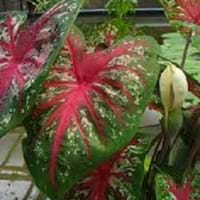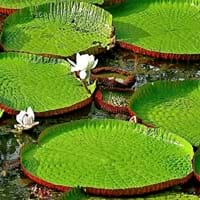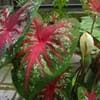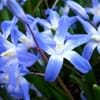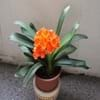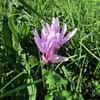Life Span
Annual and Perennial
Annual
Type
Tender Perennial
Aquatics
Origin
Southern Europe, Mediterranean
Hybrid origin
Types
Not Available
Not Available
Habitat
gardens, Grassland, Prairies, tropical environments, Tropical regions
along watercourse
USDA Hardiness Zone
7-9
10-15
Sunset Zone
4, 5, 6, 14, 15, 16, 17, 18, 19, 20, 21, 22, 23, 24
21,22
Habit
Mat-forming
Spreading
Flower Color
White, Green
White, Pink, Light Pink
Flower Color Modifier
Bicolor
Not Available
Fruit Color
Green
Not Available
Leaf Color in Spring
Gray Green
Green, Yellow green, Bronze
Leaf Color in Summer
Gray Green
Green, Yellow green
Leaf Color in Fall
Gray Green
Green, Yellow green
Leaf Color in Winter
Light Green
Green, Yellow green
Leaf Shape
Linear
Disc shaped
Plant Season
Spring, Summer, Fall, Winter
Spring, Summer, Fall
Sunlight
Full Sun, Partial Sun
Full Sun
Type of Soil
Loam, Sand
Clay, Loam
The pH of Soil
Neutral, Alkaline
Acidic, Neutral
Soil Drainage
Well drained
Not Available
Bloom Time
Spring, Late Spring, Early Summer, Summer, Late Summer, Early Fall
Summer, Indeterminate
Tolerances
Drought
Wet Site
Where to Plant?
Container, Ground, Pot
In Water
How to Plant?
Seedlings, Stem Cutting
Seedlings
Plant Maintenance
Medium
Medium
Watering Requirements
Allow soil to be completely dry in between waterings, Water Deeply, Water less during winter
Keep immersed in water
In Summer
Lots of watering
Aquatic Plant
In Spring
Moderate
Aquatic Plant
In Winter
Average Water
Aquatic Plant
Soil pH
Neutral, Alkaline
Acidic, Neutral
Soil Type
Loam, Sand
Clay, Loam
Soil Drainage Capacity
Well drained
Not Available
Sun Exposure
Full Sun, Partial Sun
Bright direct sunlight
Pruning
Cut or pinch the stems, Do not prune during shooting season, Prune if you want to improve plant shape, Prune prior to new growth, Remove deadheads
Remove damaged leaves
Fertilizers
No fertilizers needed
No fertilizers needed
Pests and Diseases
fungus, Insects, Red blotch
Aphids, Snails
Plant Tolerance
Drought
Frost, Full Sun
Flower Petal Number
Single
Double
Foliage Texture
Fine
Bold
Foliage Sheen
Matte
Glossy
Attracts
Bees, Birds, Butterflies
Insects, Moths, Snakes
Allergy
Skin irritation
Skin irritation
Aesthetic Uses
Beautification, Showy Purposes
Cottage Garden, Showy Purposes
Beauty Benefits
Not Available
Making cosmetics
Environmental Uses
Air purification
No fertilizer, pesticides, or herbicides needed, Very little waste
Medicinal Uses
No Medicinal Use
Not Available
Part of Plant Used
Whole plant
Flowers
Other Uses
Showy Purposes
Used as Ornamental plant
Used As Indoor Plant
No
Sometimes
Used As Outdoor Plant
Yes
Yes
Garden Design
Alpine, Container, Edging, Foundation, Groundcover, Mixed Border, Rock Garden / Wall
Feature Plant, Tropical, Water Gardens
Botanical Name
CALADIUM 'Aaron'
VICTORIA 'Longwood Hybrid'
Common Name
Aaron Caladium, Angel Wings, Fancy-leaved Caladium
Giant Waterlily, Longwood Hybrid Giant Waterlily
In Hindi
Aaron Caladium
पानी लिली
In German
Aaron Caladium
Riesen- Seerose
In French
Aaron Caladium
géant nénuphar
In Spanish
Aaron Caladium
lirio de agua
In Greek
Aaron τροπικό φυτό
νούφαρο
In Portuguese
Aaron Caladium
waterlily
In Polish
Aaron Caladium
Lilia wodna
In Latin
Aaron Caladium
ingens aqua lilium,
Phylum
Tracheophyta
Angiosperms
Class
Liliopsida
Equisetopsida
Order
Alismatales
Nymphaeales
Family
Araceae
Nymphaeaceae
Clade
Angiosperms, Monocots
Angiosperms
Tribe
Not Available
Not Available
Subfamily
Aroideae
Not Available
Number of Species
Not Available
Not Available
Difference Between Aaron Caladium and Giant Waterlily
If you are confused whether Aaron Caladium or Giant Waterlily are same, here are some features about those plants to help you choose better. Many people think that these two plants have the same characteristics, but one can see Aaron Caladium and Giant Waterlily Information and learn more about it. Fertilizers required for proper growth of Aaron Caladium are No fertilizers needed, whereas for Giant Waterlily fertilizers required are No fertilizers needed. Hence, one should know the basic difference between Aaron Caladium and Giant Waterlily if you are planning to have them in your garden to enhance its beauty.
<
Flowering PlantsImportance of Aaron Caladium and Giant Waterlily
Want to have the most appropriate plant for your garden? You might want to know the importance of Aaron Caladium and Giant Waterlily. Basically, these two plants vary in many aspects. Compare Aaron Caladium and Giant Waterlily as they differ in many characteristics such as their life, care, benefits, facts, etc. Every gardener must at least have the slightest clue about the plants he wants to plant in his garden. Compare their benefits, which differ in many ways like facts and uses. The medicinal use of Aaron Caladium is No Medicinal Use whereas of Giant Waterlily is Not Available. Aaron Caladium has beauty benefits as follows: Not Available while Giant Waterlily has beauty benefits as follows: Not Available.
Compare Facts of Aaron Caladium vs Giant Waterlily
How to choose the best garden plant for your garden depending upon its facts? Here garden plant comparison will help you to solve this query. Compare the facts of Aaron Caladium vs Giant Waterlily and know which one to choose. As garden plants have benefits and other uses, allergy is also a major drawback of plants for some people. Allergic reactions of Aaron Caladium are Skin irritation whereas of Giant Waterlily have Skin irritation respectively. Having a fruit bearing plant in your garden can be a plus point of your garden. Aaron Caladium has no showy fruits and Giant Waterlily has no showy fruits. Also Aaron Caladium is not flowering and Giant Waterlily is not flowering . You can compare Aaron Caladium and Giant Waterlily facts and facts of other plants too.
